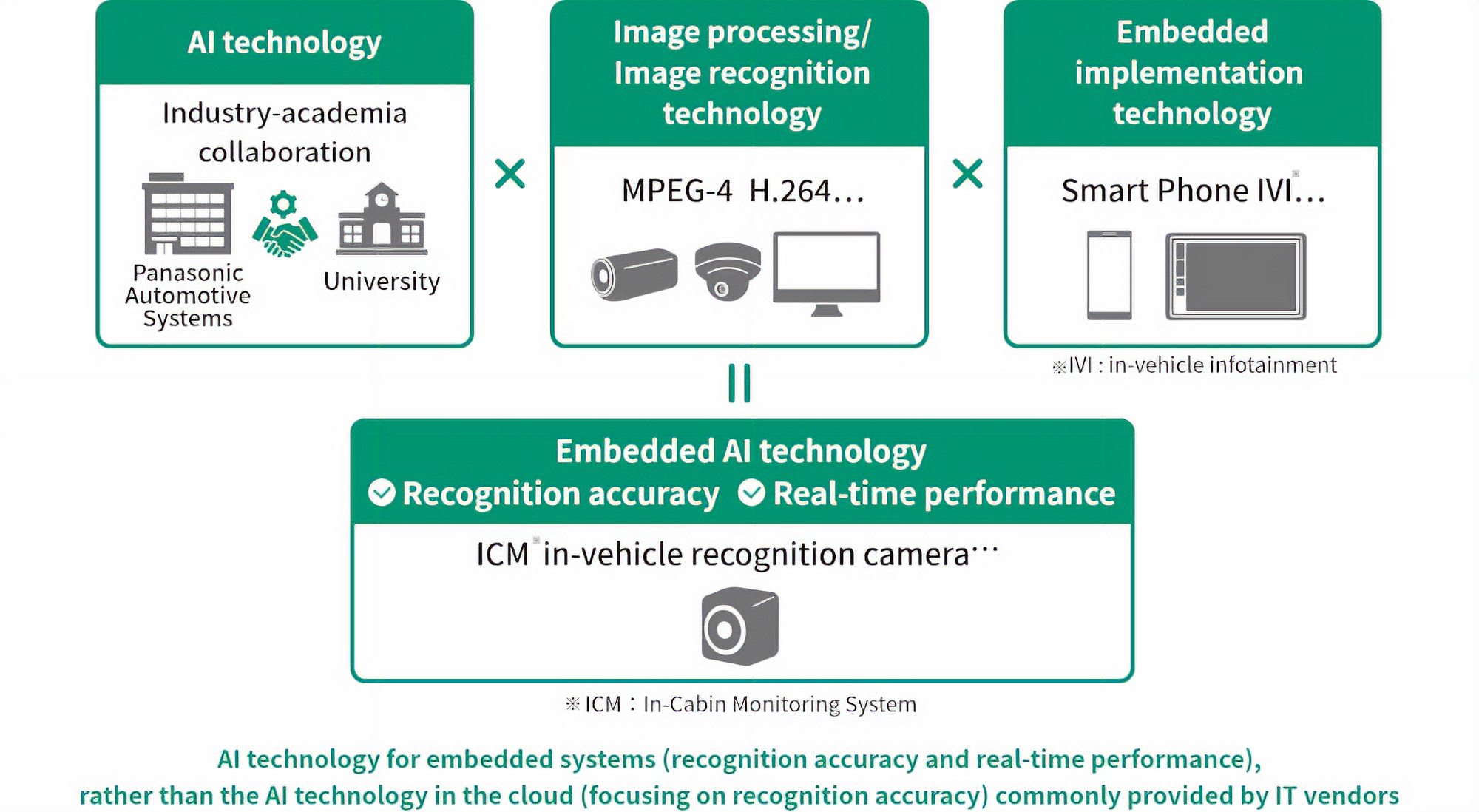
Innovation
AI
More Comfortable and Secure Mobility Close to the User with Lightweight Technologies
AI (artificial intelligence) systems are computer systems that mimic human intelligence and have the ability to learn, solve problems, and make their own decisions. AI can anticipate and make decisions by processing large amounts of data, identifying patterns and trends, and learning.
By implementing AI within in-vehicle devices, we contribute to the improvement of vehicle performance and the evolution of driver assist systems to realize safer and more comfortable mobility experiences.
High-Speed Processing
Our AI technology is capable of high-speed and highly accurate information processing. It processes information in real time to allow for quick decisions and responses. This requires real-time processing of large amounts of signals without delay, and our expertise in embedded development cultivated over many years in home appliances and cell phones is what makes this possible. This leads to improved safety in driver assist systems and more comfortable vehicle interiors.
Implementation Technology on Chips for In-Vehicle Applications
In-vehicle components need to be lightweight, and this need is even greater in EVs where energy conservation is key. Our strength lies in our design capability to equip AI, which processes vast amounts of information, on in-vehicle chips with limited capacity and power-saving designs. The key is balancing the trade-off between delivering the necessary performance and weight reduction of AI architecture. The Group’s technological development capabilities come into play here as well.
AI Technology Application Examples

Example 1
Collision avoidance for various scenarios
AI instantly analyzes images captured by cameras and recognizes pedestrians, vehicles, and obstacles in the vicinity, alerting the driver to avoid collisions or activating automatic braking. With conventional technologies, there are cases where a person cannot be detected in irregular situations, such as when they are holding an umbrella, but AI can accurately detect and judge such situations, leading to improved accuracy in driver assistance. In the future, we aim to develop technologies that can also estimate the distance between vehicles and pedestrians, as well as the speed at which objects are moving.

Example 2
Automatic parking support for peace of mind
The camera can check for people or obstacles around the vehicle, and even in irregularly shaped parking lots with no white lines, it can perform automatic parking with high accuracy. The system can also identify when small children are sitting, so you can park your vehicle with peace of mind.

Example 3
Improving safety and efficiency in production processes
In factory production processes, AI can simultaneously detect hazardous work and protective equipment such as safety goggles to ensure employee safety. When identifying defective products, we can analyze the causes and anticipate their occurrence by applying AI, with the aim to efficiently produce higher quality products.


